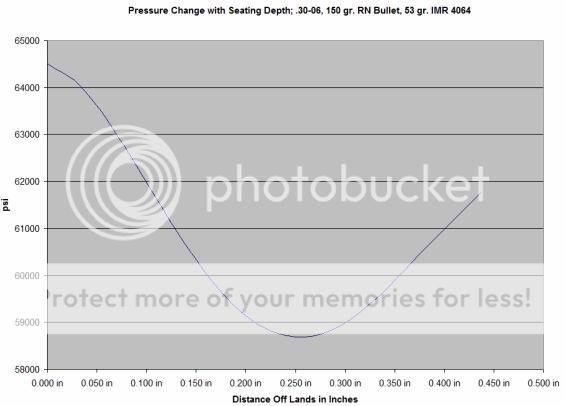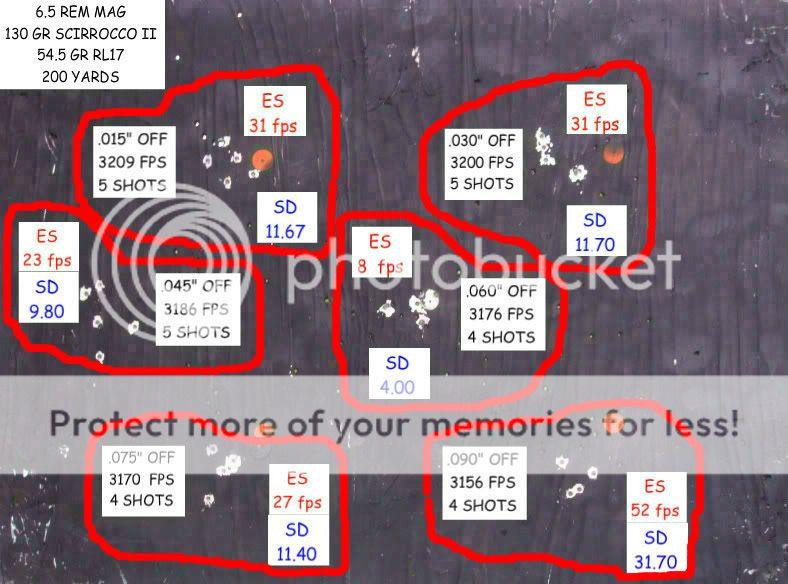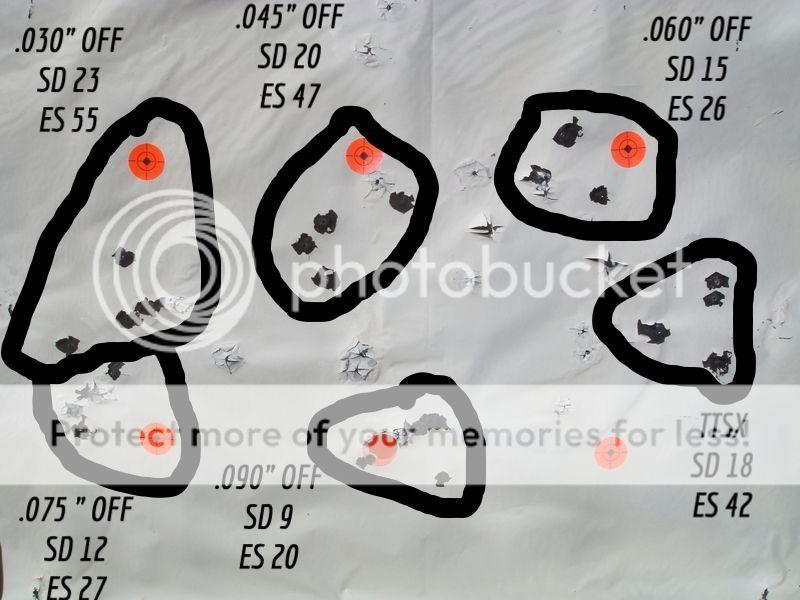Shootin4fun
Well-Known Member
In almost everyone of the 20 plus rifles I have done load development for the preferred seating depth changes with the charge weight. I do not believe it matters if you find the OCW or Optimum seating depth first because when you figure out the first one and then the second one you really need to tweak the first again to see if you can make it better. When you are talking about some the accuracy we are chasing, small changes in pressure can make a decent difference on accuracy. The ladder test and OCW, if done correctly, are trying to find a wide node of acceptable accuracy.
Yes, I believe this to be true in the sense that there is an optimum depth for different charge levels. As such, there is always some tail chasing involved unless I just get lucky and start with 2 variables that work together, give good accuracy, and don't show pressure signs. So there is significant trial and error involved.
Mike proposes that seating depth has a much greater affect on grouping than charge weight steps. Others claim the opposite. Interesting, in the Berger article they say "This sweet spot is a band .030 to .040 wide and is located anywhere between jamming the bullets into the lands and .150 jump off the lands." .030 - .040 wide!
On a related note, sample size- for me anyway, working with sporter barrels, group size may vary due to shooting technique not being perfect all the time. No way could I do a string of 1 or 2 shots at each charge level as some suggest in order to find a vertical plateau. I shoot minimum 3, max 5 at each charge level. Unless it's cold and cloudy out, I have now taken to using ice bags in order to compress the time for barrel cooling or else I just can't get enough testing done in one day.



